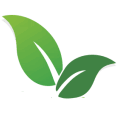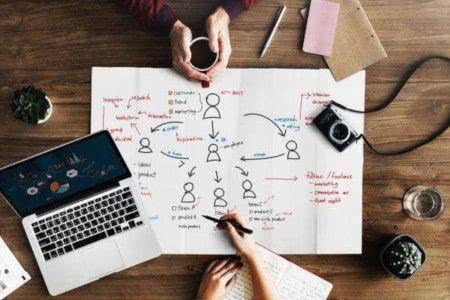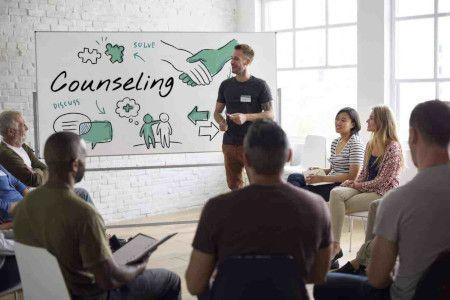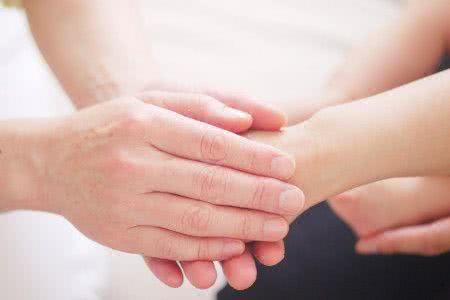 As we begin to understand what lies beneath the surface of addictions and self sabotaging behaviors, we are able to break free…able to connect with ourselves and the world with greater purpose, fulfillment and a true sense of meaning.
As we begin to understand what lies beneath the surface of addictions and self sabotaging behaviors, we are able to break free…able to connect with ourselves and the world with greater purpose, fulfillment and a true sense of meaning.
Prescription Drugs Detox
The Breakthrough Treatment Programme
Contact Your Counsellor
081 444 7000
The toxic danger of prescribed drugs
For various reasons, as explained below, prescription medicines are often perceived as harmless and, as a result, they are easily abused. However, persistent abuse of prescription medication can be fatal. Stopping the drug intake frequently requires professional healthcare, but is a much better option than the inevitable and more severe problems caused by continued abuse.
If you want to stop abusing drugs, your body must be restored to its natural state under controlled conditions by removing all traces of the drug from your body. This is called detoxification or, more commonly, detoxing. During detoxing, an abuser may experience unpleasant physical and mental withdrawal symptoms. The withdrawals can be severe, even fatal, and must be medically constrained to prevent trauma.
Prescription drugs chemically alter the brain and the functioning of internal organs. Under medical control this benefits you when needed for healing purposes. However, excessive usage distorts the alterations and yields unpleasant withdrawals when you stop or limit the drug and start detoxing. This is because your mind and body became used to the drug and can not immediately adapt to its reduction – there is a time gap between you discarding the drug and the body resuming all its natural functions. This is when the withdrawals, which abusers fear most, take place.
People unintentionally become addicted to a prescription when they use it for a long period for medical reasons, or when they increase the dosage with the intention of increasing the benefit. When the medical need ceases, they find that, when they stop using the drug, it causes withdrawals. At this point, instead of turning to a medically assisted withdrawal process, many people simply continue abusing the medication.
Most people feel prescription drugs are mild and acceptable when compared to heroin or similar drugs. Unlike the “hard core” illegal drugs, they are made by respectable companies, prescribed by doctors, widely used and mostly legal to possess. This lulls people into abusing them and inspires them to deny the severity of the problem.
Many people abuse prescription drugs privately to relax or to boost their energy. Some social interactions, such as taking random prescription drug mixtures at parties, also expose people to peer pressure and other influences that stimulate abuse. Some people survive occasional usage without becoming addicted, but others are more susceptible.
Because prescription drugs are so widely and legally distributed, it is very difficult for authorities to control its illegal spread. Smugglers use these “ready-made” products in a flourishing illegal street trade where people can buy it without a prescription.
Prescription drugs have many different effects and consequences. The most common physical consequences of abuse include digestive, lung, blood, liver, kidney, heart and brain defects. The withdrawal symptoms also vary widely, ranging from headaches to comas and an array of mental anguishes. The longer the abuse carries on, the harder the healing becomes.
You may need medical help to detox from prescription drugs.
Many abusers feel over-confident while they still have some of the abused drug circulating in their system and then embark on self-help campaigns that fail when the full withdrawals kick in. Home remedies may work in mild to moderate abuse cases, but even then there are many things that can go wrong without professional healthcare.
Abuse that necessitates physical detoxing also indicates emotional tendencies for which you may require psychological therapy.
Methods of detoxing and withdrawing
In many cases, a home detox is not advised and should take place in a hospital under medical supervision. It stands to reason that a medicine which is strictly controlled by the authorities is dangerous. A detox process is unpredictable and unexpected problems can develop suddenly. Without immediate professional help on hand, this can be life-threatening. Aspects to consider include the following:
Medical advice: Abusers are often confident that they can heal themselves and then end up in emergency wards. The first step is to get expert advice, and any required tests, from a doctor or rehab centre. There are numerous health issues; far beyond the scope of the average person.
Hospitalisation: Detoxing in a hospital provides safe and secure 24-hour professional resources. Oral and intravenous medication is administered and adjusted in a monitored environment. You do not have to do research, experiment or take risks.
Rehabilitation centres: Medicinal abuse indicates vulnerability to any type of escape mechanism, such as alcohol, drugs and behaviour problems. Rehab centres are fully supportive environments where vulnerabilities can be healed and strengthened to ensure long term success.
Detox at home: If your doctor agrees to it, this requires strict discipline and a peaceful, non-distractive environment. Keep in mind that psychotherapy is required for long term sobriety, as the original mental triggers that led to the abuse will not be cleared by a physical detox.
The following tips can help with a home remedy. Consult your doctor before applying these tips, especially if you have a cardiovascular or other condition that might be affected by it:
Sudden abstinence: Suddenly stopping usage of a drug without medical assistance is the fastest, but also the most dangerous and unpleasant way to detox. Going “cold turkey” is the least likely to succeed in both the short term and the long term.
Moderation: Tapering off or gradually reducing your intake, lessens the withdrawal anguish. However, it is a known fact that most abusers do not manage to taper off successfully on their own. This is not a sign of weakness, but a manifestation of the destructive force of chemical dependency.
Exercise: If approved by a doctor, exercise will help to get rid of toxins through sweating, as well as improved cardiovascular and organic functioning. Rest when you start feeling tired. Overdoing it will simply dump new toxic waste into your muscle tissue.
Sauna: If approved by a doctor, a warm sauna, followed by mild exfoliation, will flush toxins by way of sweating and removing toxic waste from the skin surface. Drink water and electrolytes to replenish lost body fluids and to prevent dehydration.
Water: If approved by a doctor, drinking about eight glasses of water a day will speed up flushing the toxins out of your system via the kidneys, skin and other bodily functions. Be careful of overdoing it, as drinking too much water can also cause problems.
Supplements: Ask your doctor about vitamins, minerals, enzymes, herbs, fruits, diuretics and laxatives that can safely help your body to get rid of the toxins. Do not rely on random advisers, as they may not account for medical conflicts known to your doctor.
Replacement drugs: If you have moments of anguish during the detox, do not soothe it with alternative medication unless your doctor approves it. They may seem different to the substance you are detoxing, and therefore harmless, but they can cause other complications.
Withdrawal symptoms
Untreated withdrawal symptoms from prescription drugs include:
- Headaches, dizziness
- Blurred vision
- Anxiety, confusion
- Impatience, irritability
- Depression, anger
- Insomnia, memory loss
- Poor concentration
- Poor coordination
- Lack of energy
- Mood swings
- Chills or sweating
- Trembling, numbness
- Joint pain, muscle pain
- Cramping, nausea
- Chest tightness
- Shortness of breath
- Hyperventilation
- Heart palpitations
- Slowed heart rate
- Hypertension
- Seizure, stroke, coma
Phases of abuse leading to withdrawal
Non-medical use: This is when you have no medical need for a drug and do not intend to use it continuously, but do employ it as a crutch on certain occasions. Over time you become conditioned to it and use it more often. It is a common step towards building a pattern of persistent abuse.
Misuse: This is when you take more than the prescribed dosage because you think that taking more will heal you better, or because you want the feeling it produces more than you actually need it. It builds tolerance, forcing you to take ever bigger or more frequent dosages to get the same effect.
Abuse: Higher tolerance and withdrawal levels spawn outright abuse. You become dependent for non-medical reasons. Toxic reactions start appearing and withdrawal symptoms are felt when the drug is reduced.
Addiction: The final stage of physical and psychological dependence. There is a compulsive need for the drug. The toxic reactions and withdrawals are severe and can even cause death if not treated professionally.
Disorders linked to prescription drug abuse
Dependency on prescription drugs often go hand in hand with other disorders. In such cases, the co-existing disorder must also be treated as part of the detoxification and withdrawal process. Examples of disorders that can co-exist with medicinal drug abuse are:
- Physical pain
- Anxiety
- Depression
- Panic disorders
- Bipolar disorder
- Post-traumatic stress disorder
- Complex post-traumatic stress
- Obsessive compulsive disorder
- Phobias and compulsions
- Personality disorders
- Eating disorders
- Alcoholism
- Other addictions
- Schizophrenia
Common signs of prescription drug addiction
When a person exhibits any of these signs, they are at the stage where they should immediately stop the usage of prescribed medication and initiate the detox process. When someone is almost or already addicted, they:
- Start using more and more of the medication.
- Often complain their symptoms are getting worse.
- Refuse alternative medication for the symptoms.
- Keep using the meds after the need for it has passed.
- Change their habits, routines for no apparent reason.
- Have sudden mood or personality changes.
- Neglect their appearance, hygiene, responsibilities.
- Put excessive effort into obtaining the medication.
- Are anxious when the container is almost empty.
- Visit different doctors to get (more) prescriptions.
- Often claim they had lost a written prescription.
- Often claim the meds were lost, stolen, destroyed.
- Strenuously deny their usage is out of control.
- Panic if they forget where meds are, or mislaid it.
- Take the meds with them whenever they go out.
- Lie about the reason for having meds on them.
- Hide the medication and keep a watchful eye on it.
- Use the meds when or where nobody will see them.
- Frequently leave a group to go somewhere alone.
- Make excuses not to share the meds with someone.
- Accumulate a “reserve” supply of the medication.
- Lie about their reason for going to a doctor.
- Lie about their reason for going to a pharmacy.
- Bribe others to fraudulently obtain prescriptions.
- Falsify or produce counterfeit prescriptions.
- Buy from random, different pharmacies.
- Buy the medication on the black market.
- Have withdrawals if a dosage is missed.
- Wake up from sleep when a dosage is due.
- Feel the meds are more important than all else.
- Take other drugs, alcohol if they run out of meds.
Common types of addictive medications
This list can be used as a layman’s guide to assist with the identification of certain medications that could be at the root of someone’s changes in behaviour or if you suspect that the person has a drug problem. If someone habitually uses or has any of these drugs in their vicinity, then it is prudent to keep an eye on them. One must be careful not to over-react or make false accusations, but if you are alert then you can save a life by advising them to initiate a detox.
Not all addictive medicines require prescriptions. Some over-the-counter (OTC) drugs can be just as destructive – they come in many different formulations and some are included in this list:
Painkillers and Pain Relievers: Painkillers and pain relievers come in a confusing variety of blends and names, but the bottom line is that any of them can lead to abuse, withdrawals and serious health problems. It begets ailments like digestive and mental disorders, as well as cardiovascular, liver and kidney failure.
Aspirin, paracetamol, ibuprofen and other OTC painkillers often come premixed with lots of caffeine to give you extra rebound when the pain dissipates. Caffeine is addictive and painkillers are a convenient way to ingest it, so painkiller-abuse easily takes root.
Opioid pain relievers are prescription drugs. Generally less effective at pain reduction, they have the added benefits of reducing anxiety and creating a false sense of wellbeing that makes pain more bearable. The euphoria that they produce, make them highly addictive. They include morphine, codeine, hydromorphone, methadone, and oxycodone.
Cough medicines: Decongestants, cold and flu syrups, tablets and capsules contain chemicals that are not harmful in small quantities and can energise you or produce other temporary effects that you may want or enjoy. If abused you get problems like stomach aches, numbness, confusion, hallucinations and withdrawals that can be more horrific than withdrawal from alcohol.
Diet drugs: Anorectics and appetite suppressants are sold as OTC and controlled drugs. Some abuse it simply to get high on the chemicals they contain. Others have eating disorders, such as anorexia. Signs include emaciation, swollen ankles, yellow eyes, rash, itching, nausea, chest pains, insomnia, dizziness, hypertension, irregular pulse, anxiety, hallucinations, seizures. Treatment in a rehab facility is necessary in all cases.
Motion sickness drugs: OTC pills, liquids and suppositories for reducing dizziness and nausea. In moderation it causes drowsiness, “daydreaming”, loss of appetite. Abused for the sedative and anorexic effects. Heavy usage brings memory loss, poor co-ordination, pupil dilation, blurred vision, dry mouth, vomiting, diarrhea, urinary retention, confusion, disorientation, delusion, paranoia, hallucination, delirium, coma, stroke, heart attack, possible long term brain damage.
Sleeping pills: OTC tablets for inducing sleep. Some are antihistamines used for allergies, hay fever and colds, but as they also induce drowsiness, they are sold as sleeping pills. Often sought as an escape mechanism when tortured by worries. In abuse they worsen insomnia, weaken the body and cause narcolepsy (uncontrolled sessions of sleepiness and wakefulness).
Sedatives and Tranquilisers: Sedatives are barbiturates used for treating anxiety, tension and insomnia. Tranquillizers are benzodiazepines used for anxiety, stress and panic. In practice, there is little difference. Both depress the central nervous system, induce calmness and drowsiness and are extremely addictive. The safest way to quit is to taper off under medical care and to undergo therapy in a rehab facility.
Some examples of CNS drugs are; Ativan, Valium, Librium, Klonopin, Halcion, Prosom, Ambien, Lunesta, Sonata, Mebaral, Luminal, Nembutal, Xanax. Withdrawal causes headaches, sleep disorders, muscle spasms, breathing problems, trembling, bone pain, diarrhea, heart palpitations, anxiety, depression, panic attacks, suicides, hallucinations, convulsions, seizures.
Antidepressants: Prescribed for depression and other mood disorders. It is not considered addictive, as it does not cause craving or a need for bigger dosages over time. However, once you start using it, your brain adapts to it and you have to taper it off gradually if you want to stop using it, otherwise you get withdrawals.
It is always better to heal the mental cause of depression with therapy, rather than squashing the symptoms with drugs. People easily replace their antidepressants with alcohol and other drugs, but when they go for psychotherapy, they are equipped to enjoy life without any drugs.
Stimulants: These are for treating attention-deficit disorders, narcolepsy, depression and obesity. It dampens appetite, improves energy, alertness and concentration and sets free brain chemicals that make us feel good. They are abused for all these reasons. Examples are dextroamphetamine (Dexedrine, Adderall) and methylphenidate (Ritalin, Concerta).
Side-effects include increased blood pressure, heart rate, respiration, dehydration, hostility, paranoia, seizures and heart failure. To void the abuse the dosage must be decreased slowly and the withdrawals treated under medical care. This should be followed by behavioural therapy.
Street names for prescription drugs
If you overhear someone you care about using these words, then it should immediately raise a red flag in your mind. The street names change continuously, but some linger for a long time. If you spot remarks like this, it may mean the person is already so involved that a detox is on the cards:
A-minus, Barbs, Beans, Bennies, Benzos, Big boys, Black beauties, Blues, Bricks, Candy, Chill pills, Christmas trees, Cotton, Crosses, Dex, Downers, Double trouble, French fries, Happy pills, Hearts, Hillbilly heroin, Jif, Kicker, Kiddy coke, LA turnaround, Morph, OC, Oxy, Oxycet, Oycotton, Percs, Phennies, Pilz, R-ball, Reds, Red birds, Rid, Rits, Rittys, Robo, Roses, Skippy, Skittles, Smart drug, Speed, Tooies, Totem poles, Tranks, Tranqs, Truck drivers, Tuss, Tussin, Uppers, Vikes, Vitamin D, Vitamin R, Watson, West Coast, Yellows, Yellow jackets, Z-bars, Zombies.
Slang for prescription drug events: Pharming (mixing random prescription drugs), Pharm Parties (events where random prescription drugs are shared and mixed), Trail Mix (mixing prescription drugs at pharm parties), Recipe (mixing prescription drugs with alcohol or other drinks), Robodosing (abusing cough syrup)
Medical Aid and Insurance
If you belong to a medical aid fund or have medical insurance, you can phone them for financial assistance for detoxing and rehabilitation. You may be entitled to assistance under the rules or policy terms. Many schemes offer it as part of their benefits.
Professional treatment
People battling with prescription drug abuse often wonder if going to a rehab facility is really necessary. Self-help is possible, but depends on many factors, provides limited resources and exposes you to risk. The best option is to consult an experienced health professional who specialises in addiction therapy. They are qualified to advise you about the best route to follow.





